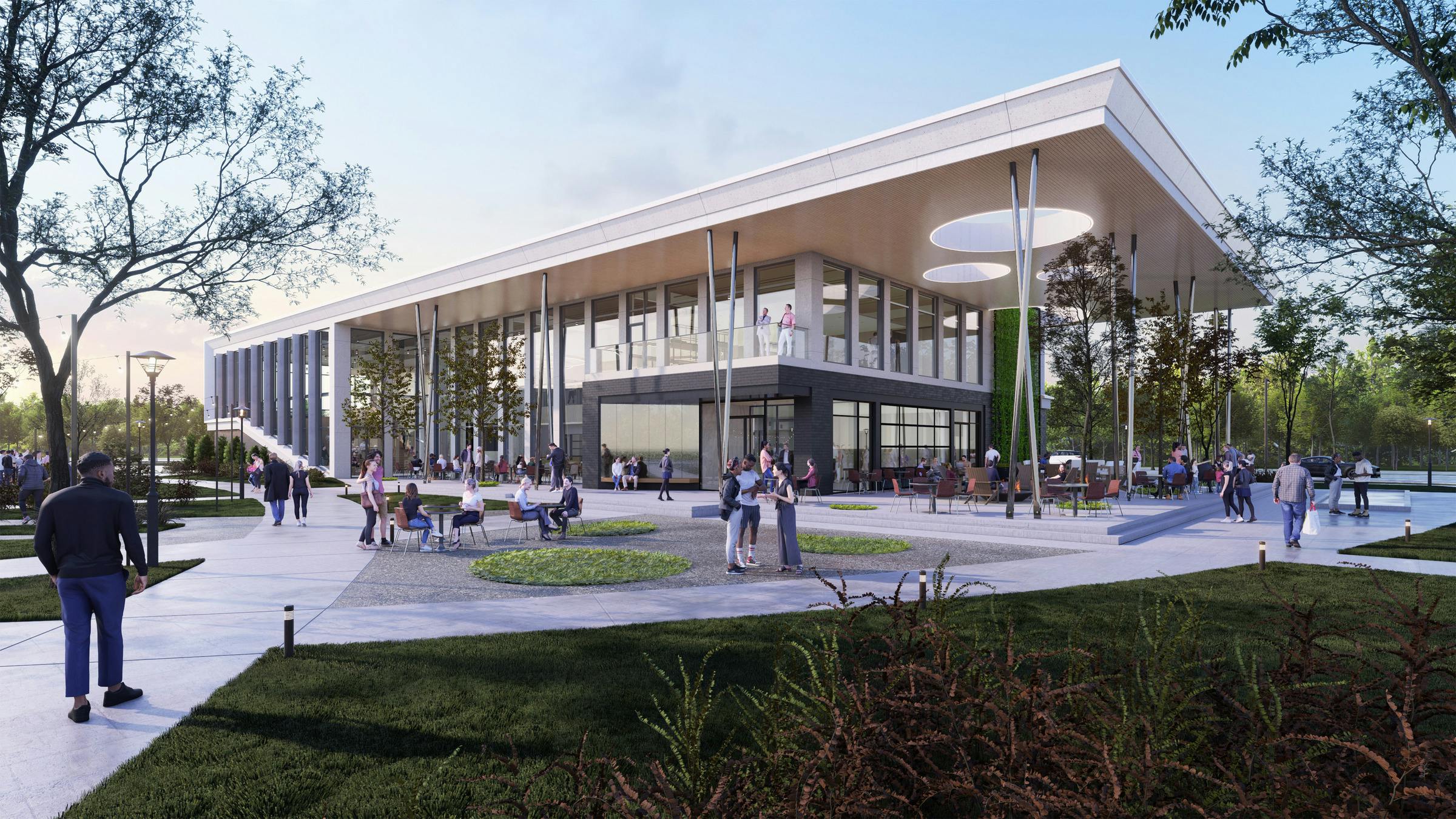



Reimagining Sustainability
A Journey to Net Zero in Large-Scale Manufacturing
Recognizing that sustainability is a gradual process, ISO standards provide a global, third-party verified framework for incremental progress. Adopting a strategic, step-by-step approach enables organizations to methodically work towards their sustainability goals. Transparency is key; when clients clearly communicate their sustainability goals, they necessitate design teams to provide tailored solutions that align with both the design intent and the owner’s objectives. This collaborative dynamic is critical in the iterative nature of design, empowering architects, engineers, construction managers, and stakeholders to work creatively to satisfy sustainability criteria.
Moving beyond the traditional "reduce, reuse, recycle" mantra, a new mindset, "rethink, reimagine, redesign," has emerged. This philosophy marks a shift from a linear consumption model to a circular, butterfly economy. It reframes waste as a continuous resource rather than a byproduct, challenging the notion of material mortality and embracing a cradle-to-cradle philosophy. This approach aims to create a system where materials circulate in a closed loop, mirroring nature's own processes. Through the lens of a case study, we explore how one client is transitioning from conventional practices to innovative sustainability solutions across their operations, meeting net zero goals for waste, water and carbon and paving the way for a greener manufacturing process.
Net Zero Waste
Manufacturing often yields products and byproducts with complex material compositions, making them a challenge to recycle. In Europe, our client has reimagined the disposal of insulin pens by repurposing their plastic components into chairs – a prime example of rethinking the conventional waste hierarchy from “cradle to grave” to “cradle to cradle.” Similarly, in Brazil, the glass from these pens is innovatively used as an additive in concrete, surpassing traditional methods by replacing both the aggregate and the sand component. This creative material utilization not only diverts waste from landfills but also reduces the demand for new, raw materials, transforming what would otherwise be waste into a value-adding process.
Carbon Neutrality
The biotech and pharmaceutical industries are known for their substantial carbon emissions, often eclipsing those of forestry and paper. Yet, these emissions can be markedly reduced with thoughtful strategies in laboratory and cleanroom design, such as minimizing the use of fume hoods and ventilation systems. A case in point is our client who required refrigerants with a global warming potential (GWP) of no more than 5, a stark reduction from the usual specification of 1,386. By leveraging the building's native cooling and heating systems, the team nearly eliminated the GWP, significantly reducing the carbon footprint of their 130,000-square-foot controlled environmental rooms, which operate continuously throughout the year. Such initiatives highlight the importance of reevaluation and the establishment of higher environmental standards, leading to significant carbon footprint reductions in large-scale operations.
Net-zero Water
Water scarcity, particularly in regions with predictable dry seasons, is a critical concern. In response, the client's manufacturing facility in South America has implemented an innovative system to collect and purify rainwater for the production of injectable drugs. With an 80,000-liter capacity, this system processes approximately 21 million gallons of water annually without tapping into municipal supplies. This effort not only offsets the water consumption equivalent to 6,000 families but also enables the facility to provide water to the local community during droughts, demonstrating a commitment to corporate social responsibility and community engagement. Additionally, repurposing plastic waste from the manufacturing process into water containment jugs presents another application for post-industrial waste, enhancing the resilience of the surrounding community. As pharmaceutical manufacturers progress on their continuous improvement roadmaps, the creation of their own inputs, as exemplified here, will be crucial for simplifying supply chains and increasing resilience.
Incorporating practices like these into a company's sustainability roadmap significantly enhances operational efficiency. Advancing processes through standardization, integration, and optimization transitions sustainability goals from aspirational targets to expectations deeply embedded within corporate culture. The implementation of an environmental management system is fundamental to this continuous refinement. Furthermore, obtaining ISO certification provides that systematic, third-party framework for conducting lifecycle analysis, reaffirming the organization's commitment to environmental stewardship.
Experience has taught us the critical importance of allocating time to establish and maintain a clear vision and specific, achievable goals. By engaging in a collaborative process that unites various stakeholders, while acknowledging existing constraints, we pave the way to success. In designing for adaptability, lifecycle potential, and circularity, we assist our clients with reimagining the use of their space, giving priority to repurposing materials once regarded as waste.
Through such initiatives, we witness the evolution of manufacturing plants into self-sustaining ecosystems that not only meet global standards but actively contribute to the well-being of our planet. It’s a transformation that demands a broad reimagining of processes, design, and operations. As companies across the globe observe these successes, the path toward a circular economy, marked by net zero waste, water, and carbon neutrality, becomes increasingly navigable, steering us toward a future where every material's end is simply the start of its next valuable chapter.








